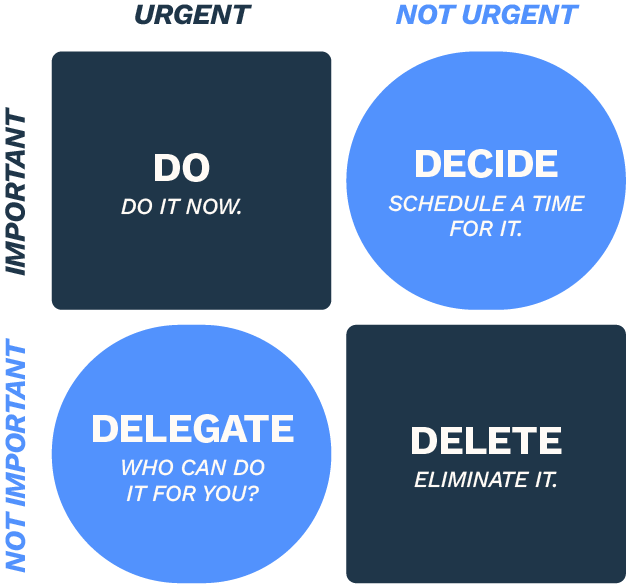We earn from qualifying purchases from Amazon Associate links.
Everyone is after your attention with emails, social media, advertisements, promotional items, text alerts, commercials, and cold calls now generated by AI (artificial intelligence). So it’s no surprise that managing your time and tasks effectively is critical. With distractions all around and constant demands for attention, learning how to prioritize can transform not only your productivity but also your well-being. This blog will explore actionable strategies for mastering prioritization, hinting at insights that are fully explored in our comprehensive ebook, The Best Prioritization Mastery Guide. If you’re ready to boost your efficiency, read on, and for the full blueprint, be sure to download the ebook.
Why prioritization matters
We often juggle so many tasks that it’s easy to feel overwhelmed. Yet, not all tasks carry the same weight (e.g. feelings extremely busy but not actually productive.) Effective prioritization is about identifying what truly matters and focusing your energy there. According to the Harvard Business Review, 97% of workers believe that prioritization directly impacts their career success. However, knowing where to start can be challenging. That’s where prioritization frameworks and tools come into play.
Proven methods for time management and prioritization

The Eisenhower Matrix: Urgency vs. importance
One of the most widely used prioritization models is the Eisenhower Matrix. This simple yet powerful tool helps you categorize tasks based on two factors: urgency and importance. The matrix splits tasks into four quadrants:
- Do (Urgent and Important) – These tasks need immediate attention.
- Decide (Important but Not Urgent) – Schedule these tasks for later.
- Delegate (Urgent but Not Important) – Outsource these tasks if possible.
- Delete (Neither Urgent Nor Important) – Eliminate or deprioritize.
By using the Eisenhower Matrix, you’ll find it easier to focus on long-term goals without being overwhelmed by urgent but low-value tasks.

Pareto’s Principle: The 80/20 rule
Another useful prioritization framework is Pareto’s Principle, which states that 80% of results come from 20% of efforts. In terms of prioritization, this means that focusing on the most impactful 20% of tasks can yield the greatest returns.
🧠 Bloom tip: Review your current workload and identify which 20% of tasks will drive 80% of your desired outcomes. These are the tasks that deserve your immediate attention and resources.
This method pairs beautifully with time-blocking exercises, which we explore further. If you’d like to see how it can revolutionize your workload, our ebook delves into this with step-by-step guidance.
The power of Ruthless Prioritization
In high-stakes environments, prioritization can’t be passive. Ruthless prioritization is about making tough choices—selecting only the most essential tasks and deferring, delegating, or cutting the rest. This strategy is particularly helpful when managing limited resources, whether time, money, or manpower.
Example: When working on a project with tight deadlines, identify the high-impact tasks and give them 100% of your focus. Everything else? Either delegate or move it to a later date.
Practical exercises to hone your prioritization skills
Urgent but not important examples
One common trap is getting caught up in tasks that feel urgent but have little long-term importance. Examples include:
- Responding immediately to non-essential emails
- Attending meetings without a clear agenda
- Handling tasks that could easily be delegated
🧠 Bloom tip: Practice categorizing your tasks using the Eisenhower Matrix. Start by identifying at least two tasks that fit into the “Urgent but Not Important” category. Then, decide whether to delegate or drop them.
Time blocking for effective focus
Time blocking is another essential tool for mastering prioritization. By setting aside dedicated chunks of time for specific tasks, you eliminate multitasking and improve focus.
🧠 Bloom tip: Use your calendar to block off time for your most critical tasks. Try color-coding to distinguish between deep work, meetings, and personal time.
How prioritization software can streamline your day
Utilizing prioritization software like Bloom Growth can take these frameworks to the next level. With the right tools, you can manage tasks, delegate, and track progress, all in one place. Bloom Growth’s weekly meetings feature acts as a prioritization funnel, helping teams identify critical issues and assign priorities collaboratively.
Jon Kaplan, CEO and founder of Kaplan Consulting, speaks highly of the benefits that Bloom Growth has brought to his team: “I’m pretty good at spreadsheets, but getting others involved and maintaining meeting cadence and structure was tough. Implementing Traction Tools, now Bloom Growth, really helped pull everything together. We customize our agenda and prioritize key issues more effectively. The quality of meetings is better with the software—I could never go back.”
Jon’s story about Kaplan Consulting resonates with a lot of business owners, particularly who are scaling quickly. If you’d like to know more about his experience, you can get a fuller picture by reading their case study.
Ready to level up your productivity?
This overview scratches the surface of what you can achieve with effective prioritization. Whether it’s using the Eisenhower Matrix, applying Pareto’s Principle, or embracing ruthless prioritization, these tools can transform how you work. Ready for more in-depth strategies and exercises? Download our full ebook, The Best Prioritization Mastery Guide, to access expert insights, practical examples, and actionable steps to boost your productivity today.

